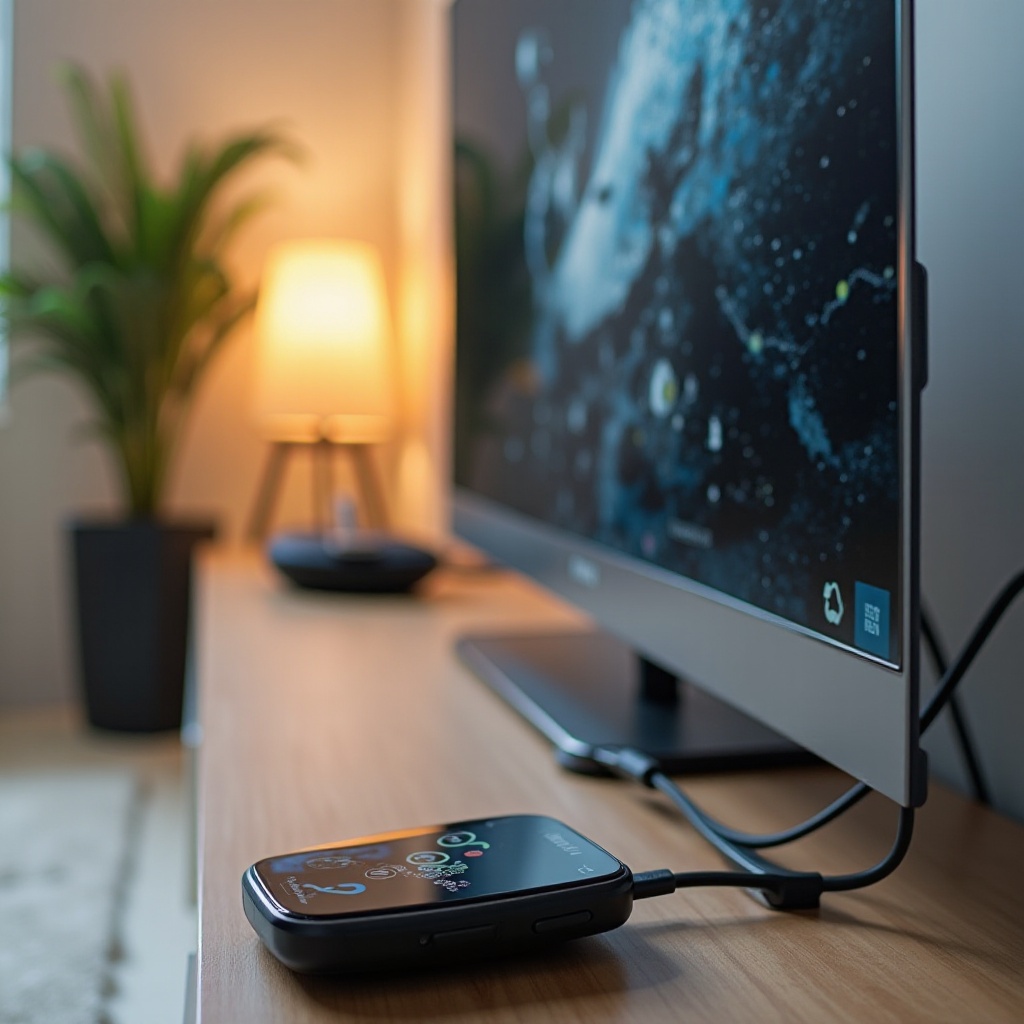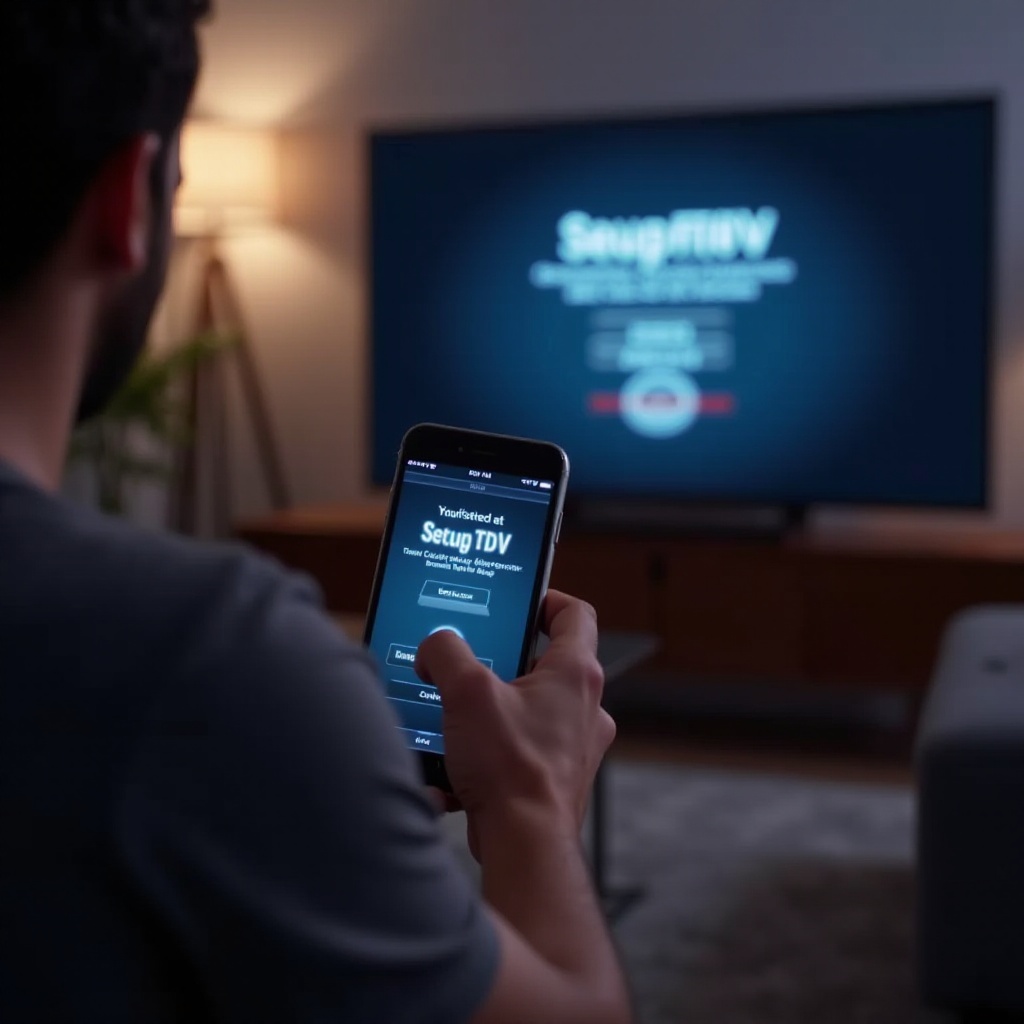Introduction
In today’s digital age, our smartphones are not just communication tools; they have become our go-to devices for entertainment, photography, and work-related tasks. To maximize your multimedia experience, learning how to connect your phone to your TV using a USB cable can be a game-changer. Whether you’re hosting a movie night or showcasing your breathtaking travel photos, viewing content on a larger screen enhances enjoyment. This guide will take you through the process, including understanding your device capabilities and exploring USB connection options.

Understanding USB Connections
The USB port is a versatile interface that has evolved from merely transferring data to providing power and enabling multimedia connections between devices. For smartphones and TVs, a USB connection allows potential direct multimedia streaming, depending on the specific models. It’s important to ensure your devices are compatible with each other to achieve seamless connectivity. Understanding the potential of your devices will prepare you for the setup.
Preparing Your Devices
Before jumping into connections, preparation is key.
Checking Compatibility
- Identify USB support on both devices. Check if your TV has a USB input and your smartphone supports USB display out.
- Consult manufacturer guides to verify USB capabilities, especially with older models, as they may lack this feature.
Required Cables and Adapters
- USB Cable: Usually, a USB-C to USB or Lightning to USB cable.
- Adapters: iPhones may necessitate a Lightning Digital AV Adapter, whereas some Androids could require a USB-C to HDMI adapter for TV compatibility.
Having these ready ensures a smoother transition when establishing the connection.

Step-by-Step Guide to Connect Android Phones
Connecting an Android device is straightforward when you follow these steps.
Connecting the Cable
- Plug the USB end into the TV’s USB port.
- Connect the opposite end to your phone’s charging port.
Adjusting TV Settings
- Power on the TV and navigate to the USB input channel.
- On your phone, select the USB option from the notification bar.
- Choose ‘Transfer Files’ or ‘File Transfer’ for screen mirroring.
Executing these steps will display your Android phone’s screen on your TV.
Step-by-Step Guide to Connect iPhones
For iPhone users, connection involves some additional equipment but is equally manageable.
Necessary Adapters
- Acquire a Lightning to USB Adapter or a Lightning Digital AV Adapter.
- Connect the adapter to your iPhone.
Setting Up the Connection
- Attach a USB cable from the adapter to your TV’s USB port.
- If using a Digital AV Adapter, connect it to an HDMI cable linked to the TV’s HDMI port.
- Switch the TV to the correct input—USB or HDMI.
- Unlock your iPhone and approve the connection when prompted.
Following these instructions will establish a stable connection between your iPhone and TV.
Troubleshooting Common Connection Issues
Even when following steps meticulously, connections can sometimes fail. Here’s how to troubleshoot typical issues:
Recognizing No Signal Problems
- Check all cable connections; reseat them if required.
- Cycle through TV inputs until the correct one is selected.
- Restart both devices to freshen connection parameters.
Solving Audio and Video Discrepancies
- Adjust volume settings on both the phone and TV.
- Inspect muted settings that might affect audio output.
- Update software on your phone to fix bugs inhibiting USB connection.
These tips will assist in resolving common issues for smooth media streaming.

Exploring Alternative Connection Methods
In cases where USB connections are insufficient, exploring alternatives is beneficial.
HDMI Adapters
- Utilize an HDMI adapter if your TV supports this connection type.
- HDMI connections often deliver superior audio-visual quality with newer phones.
Wireless Streaming Options
- Consider devices like Chromecast or Apple TV for a cable-free experience.
- These devices facilitate wireless phone-to-TV casting, avoiding physical cable restrictions.
Each alternative offers a practical solution should USB prove incompatible or cumbersome, allowing flexibility in how you choose to enjoy your media.
Conclusion
Connecting your phone to your TV via USB is an excellent way to enhance your media consumption by employing a larger display. Whether using direct USB connections or exploring alternative methods like HDMI or wireless options, preparation and device compatibility are crucial. Follow our step-by-step guides tailored for Androids and iPhones to ensure a hassle-free setup. Remember, technology should simplify your life, so leverage these tips to optimize your entertainment experiences at home.
Frequently Asked Questions
Can I connect my phone to any TV with USB?
Not all TVs support phone connections via USB. It’s crucial to check your TV’s specifications to confirm this capability.
Do I need specific apps to make the connection work?
No specific apps are generally needed for USB connections; however, some phones might require a particular setting to be enabled.
Why is my TV not showing the content from my phone?
Ensure that all cable connections are secure and the TV is set to the proper input. Double-check your phone’s settings for USB permissions.